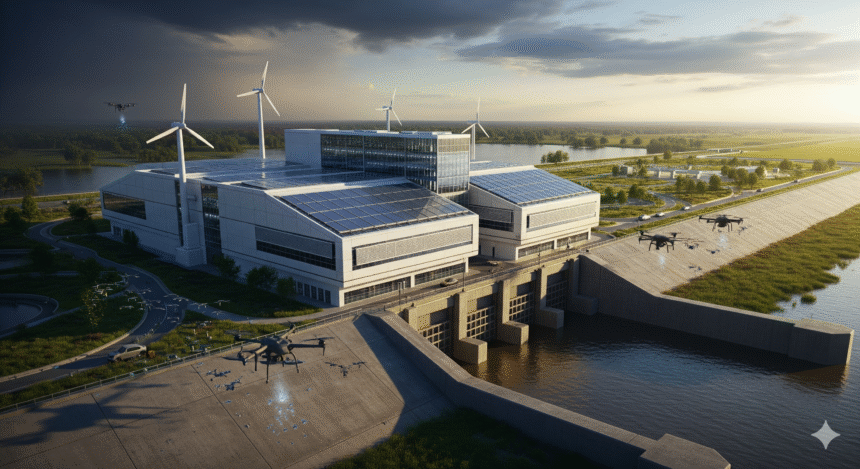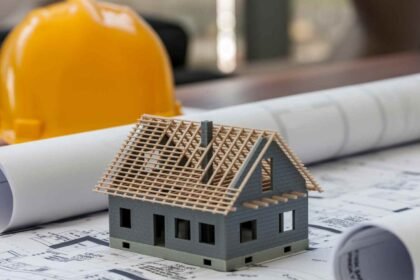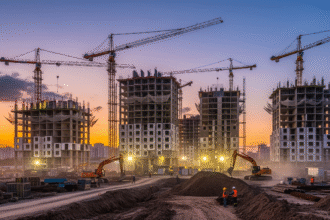Disasters don’t care how modern we get. Hurricanes, wildfires, floods, earthquakes, they test the cracks in our systems. That’s why disaster-proof infrastructure is no longer optional in the U.S.; it’s essential. The future of infrastructure is shifting toward resilience, powered by new technology, smarter designs, and lessons drawn from the past.
FEMA Rules for Climate, Resilient Design
The federal government is stepping up. FEMA now requires all federally funded buildings and projects to account for flood risks. This means climate-resilient design is baked into every new plan, raising structures, moving away from floodplains, and using real climate data. Every dollar spent on resilient infrastructure saves up to eleven in recovery later. Raising a building just two feet often adds less than two percent to project costs, proving smart infrastructure pays for itself.
Homeland Security and NIST Drive Infrastructure Resilience in the U.S.
Homeland Security’s Science and Technology Directorate is backing projects under its Community and Infrastructure Resilience program, setting the tone for what disaster-proof really means in practice. These efforts focus on emerging technologies, updated standards, and better communication between states and local governments.
NIST is also leading the charge. Their investigations of disasters like the Joplin tornado and the Camp Fire have turned into new codes and safety practices. From earthquake resilience to wildfire, safe design, they’re shaping the next era of smart infrastructure across the country.
Smart Infrastructure Solutions Already in Play
Resilient infrastructure isn’t just a theory; it’s working in the real world.
In Boston, OptiRTC uses cloud technology, sensors, and forecasts to control stormwater before it turns into floods. It’s a hands-on example of disaster recovery technology preventing damage before it happens.
In Illinois, the Structural Health Monitoring Project at UIUC installs wireless sensors on bridges, tracking stress and cracks in real time. That’s infrastructure resilience in the U.S. in action.
Miyamoto International, a U.S. consultancy, is retrofitting homes and offices to withstand earthquakes, hurricanes, and floods, while also helping communities recover faster when disaster hits.
AI, Simulation, Quantum, Plugging Into the Future
The InfraRisk platform gives planners a big picture view. By simulating interdependent systems, roads, water, and power, you can see how disasters cascade and test different recovery strategies.
AI is estimated to save the U.S. up to seventy billion dollars annually in infrastructure damages by 2050, with nearly thirty billion in savings from storm and flood events alone. AI-powered planning is making resilient building design not just possible, but practical.
Quantum computing is the next frontier. Tools can optimize post-disaster road repairs quickly, and with a priority on underserved communities. It blends high-tech efficiency with fairness, making disaster recovery technology smarter and more equitable.
Tech Volunteers and Cyber Resilience
Resilient infrastructure also means reliable communication after disasters. NET Guard, a volunteer corps, is preparing to restore the internet and networks with satellite tools and repair teams after crises.
At the same time, the White House is tightening cyber defense for utilities, transportation, and power. New national risk management plans require agencies to guard against ransomware and digital threats that could cripple infrastructure during natural disasters.
The Funding Gap That Could Undermine Resilient Infrastructure
Here’s the reality check: even the strongest ideas need funding. FEMA’s Building Resilient Infrastructure and Communities program, which supported stormwater upgrades and resilient building design in towns like Mount Pleasant, North Carolina, was cut. Projects worth millions are now stalled, leaving rural America exposed. It’s proof that resilience requires both innovation and long-term investment.
Why Disaster-Proof Infrastructure Matters
Generational failures in infrastructure, from bridge collapses to stormwater breakdowns, were not just mistakes; they were lessons that shaped better laws and designs. Today, those lessons meet modern tech. Sensors, AI, smart infrastructure design, and updated building codes are creating a stronger backbone for U.S. communities.
Disaster proof infrastructure is about more than construction. It’s about preserving lives, traditions, and resources while preparing for the storms, fires, and quakes of tomorrow. Resilient infrastructure respects the grit of the past but leverages technology to build smarter for the future.









